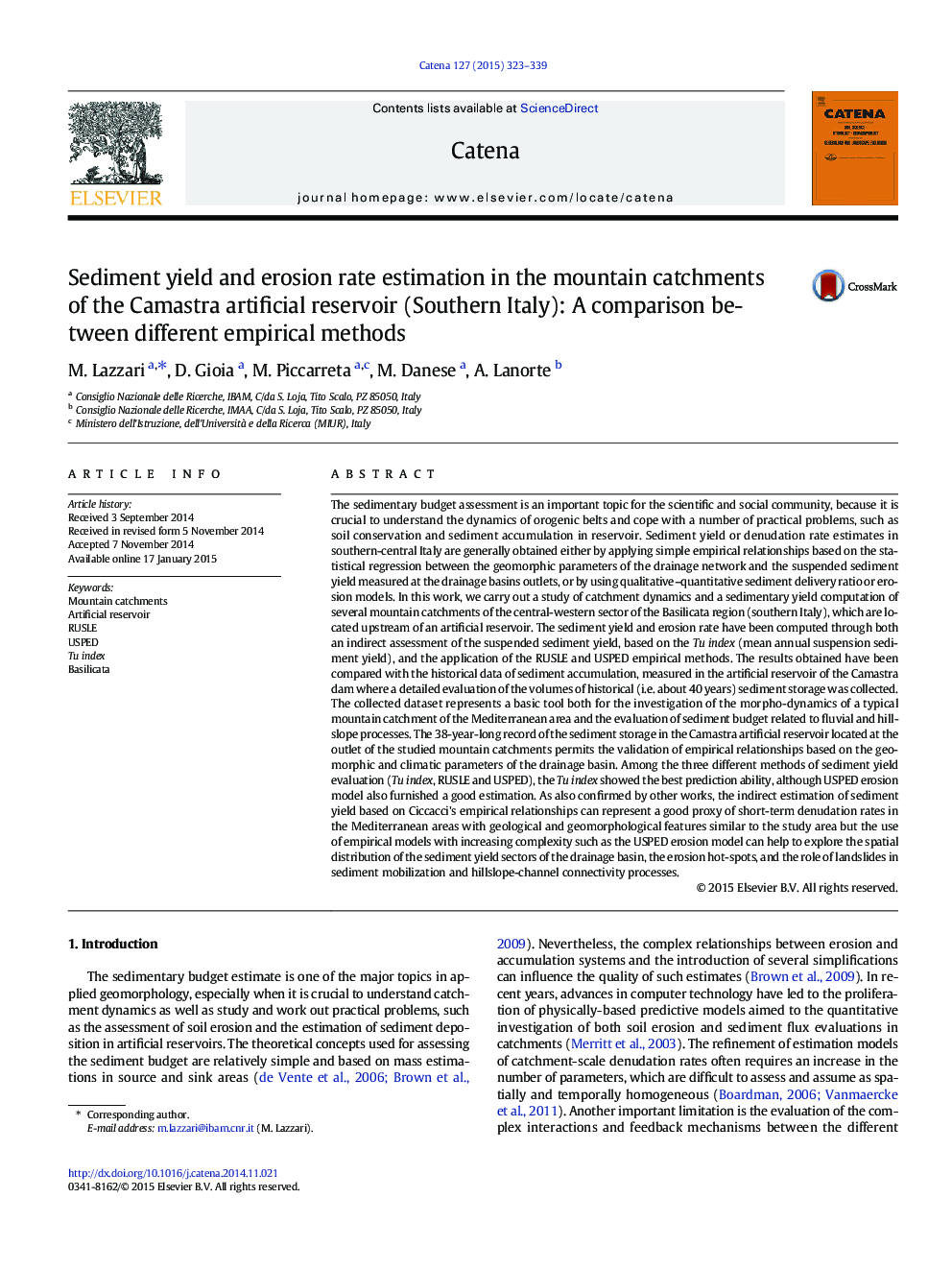| کد مقاله | کد نشریه | سال انتشار | مقاله انگلیسی | نسخه تمام متن |
|---|---|---|---|---|
| 4571234 | 1629225 | 2015 | 17 صفحه PDF | دانلود رایگان |
• We applied three erosion models EMs (Tu, Rusle, USPED) in a mountain catchment.
• We compared the EMs with the sediment storage measured in an artificial reservoir.
• Tu index and USPED models show a good prediction ability.
• The USPED erosion model provides important information about the hot-spots of erosion.
• Landslides seem to have an important role in sediment mobilization.
The sedimentary budget assessment is an important topic for the scientific and social community, because it is crucial to understand the dynamics of orogenic belts and cope with a number of practical problems, such as soil conservation and sediment accumulation in reservoir. Sediment yield or denudation rate estimates in southern-central Italy are generally obtained either by applying simple empirical relationships based on the statistical regression between the geomorphic parameters of the drainage network and the suspended sediment yield measured at the drainage basins outlets, or by using qualitative–quantitative sediment delivery ratio or erosion models. In this work, we carry out a study of catchment dynamics and a sedimentary yield computation of several mountain catchments of the central-western sector of the Basilicata region (southern Italy), which are located upstream of an artificial reservoir. The sediment yield and erosion rate have been computed through both an indirect assessment of the suspended sediment yield, based on the Tu index (mean annual suspension sediment yield), and the application of the RUSLE and USPED empirical methods. The results obtained have been compared with the historical data of sediment accumulation, measured in the artificial reservoir of the Camastra dam where a detailed evaluation of the volumes of historical (i.e. about 40 years) sediment storage was collected.The collected dataset represents a basic tool both for the investigation of the morpho-dynamics of a typical mountain catchment of the Mediterranean area and the evaluation of sediment budget related to fluvial and hillslope processes. The 38-year-long record of the sediment storage in the Camastra artificial reservoir located at the outlet of the studied mountain catchments permits the validation of empirical relationships based on the geomorphic and climatic parameters of the drainage basin. Among the three different methods of sediment yield evaluation (Tu index, RUSLE and USPED), the Tu index showed the best prediction ability, although USPED erosion model also furnished a good estimation. As also confirmed by other works, the indirect estimation of sediment yield based on Ciccacci's empirical relationships can represent a good proxy of short-term denudation rates in the Mediterranean areas with geological and geomorphological features similar to the study area but the use of empirical models with increasing complexity such as the USPED erosion model can help to explore the spatial distribution of the sediment yield sectors of the drainage basin, the erosion hot-spots, and the role of landslides in sediment mobilization and hillslope-channel connectivity processes.
Journal: CATENA - Volume 127, April 2015, Pages 323–339
